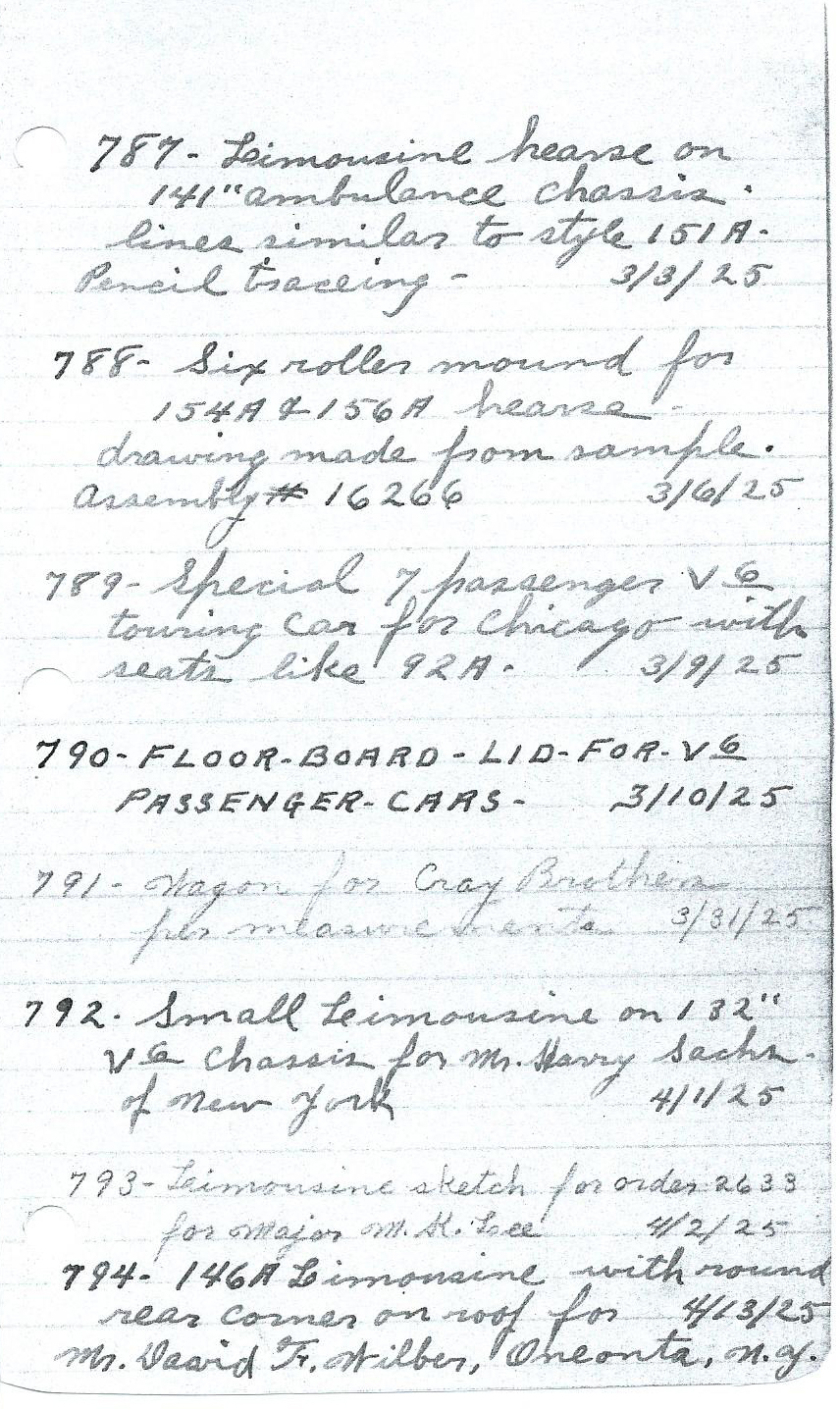GCB-Notebook-1925-03-03
#792, April 1, 1925 for Harry Sachs, of the Goldman-Sachs investment banking firm.About the Goldman, Sachs, and Strauss families and their Cunningham cars:
Samuel Sachs was a successful investor and financial leader on a rather small scale in the late 1800s. Marcus Goldman was a very successful investment banker in the second half of the 1800s. Samuel Sachs married Goldman's daughter and became a partner in Goldman's firm. In 1894 Samuel's brother Harry joined the family-run business and in 1917 Harry was made a Goldman-Sachs partner. Another connection of note, in the early 1900's a member of the Goldman family married one of Jessie Isidor Strauss's daughters (the Strauss family owned and operated Macy's Department store for over twenty years). In the decade following World War I, the Goldman-Sachs firm expanded and it was during that period of economic growth when the Sachs brothers ordered their Cunningham automobiles.
Carson recorded in his notebook in July 1922 that Samuel Sachs placed a preliminary order for a Cunningham limousine (Landaulet style) with a rather long base and customized 3 inches higher than the normal Landaulet specifications. In early August Samuel officially ordered the vehicle, and then on the August 9, 1922 had the specifications finalized.
Three years later, Carson recorded in the notebook in April 1925 (see image above) that Harry was interested in a "small" limousine with what was termed "an inside drive" (the chauffeur sat now protected more than before). Harry must have done some bargaining and thinking since he finally placed the order over two months later in June 1925.
Five years later Harry was generous to his wife and ordered what was a convertible town car but, as Carson noted, Harry requested the top to be stationary and the seat measurements changed for even more comfort. It seems that his wife wanted the seats to be copied from a larger limousine.
End of story from the notebook? Perhaps to keep up with their Goldman-Sachs relatives, the Strauss family requested a design for a small cabriolet (basically a convertible) customized with wooden wheels, which was not common for gasoline-powered cars by that time.
Nearly 90 years later, Goldman-Sachs has been actively involved in financing part of another Cunningham project, but this time a building not a vehicle. In 2013 the DePaul organization broke ground to renovate one of the old Cunningham factory buildings in Rochester, N.Y. and the building opened in December, 2014 offering more than 70 affordable housing apartments.
